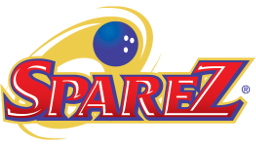Series 1, Part 1 – Growing Profit for the Long Term
The most basic equation in business is the Profit Equation:
REVENUE – EXPENSE = PROFIT
The basic profit equation is one of if not the first learning points made in every entry level business course. Profit is what is left over when expense is subtracted from revenue. Stated in its most simple terms, if you want to have funds to use for purposes other than running your business, revenue must be higher than expense. Not a great secret here, a business has the opportunity to be successful if it is profitable. The opposite is equally true; a business, which is not profitable, cannot be successful in the long term.
A competent business person wants to assure his (her) business has an adequate flow of profits. The math behind the Profit Equation tells us that if we want profit to increase, we need to either increase revenue or decrease expense. Profit grows quickest if we are able to expand revenue and decrease expenses at the same time. The examples below describe the movement of profit given various assumptions:
Base Example: Revenue – Expense = Profit
$1,000 – $500 = $500
Example 1: Increase Revenue
$1,250 – $500 = $750
Example 2: Decrease Expense
$1,000 – $250 = $750
Example 3: Increase Revenue and Decrease Expense
$1,250 – $250 = $1,000
In the examples we know that $1,000 of profit is better than $500 of profit, but we really do not know whether creating $1,000 of profit from sales of $1,250 is a good performance. Calculating Profit earned is a measure for the output of business. Calculating the Profit Margin is a means of evaluating the performance of the business.
The Profit Margin is the percentage of revenue which becomes profit. In the base example the Profit Margin is 50% (Profit/Revenue). Example 1 has a profit margin of 60% (750/1250 = 60%). Example 2 also has a profit of $750, but the profit margin is 75%. Example 3 has the best profit margin at 80%.
The logic of this example tells us the key to profitability lies in reducing expense. After all, cutting expense in example 2 created profit equal to the profit created by expanding revenue (example 1) while it created a profit margin of 15% better than example 2. The best Profit Margin is achieved in example 3 at 80%, only 5% higher than example 2.
A pair of classic questions frames the issue of profit enhancement:
If revenue was increased by one dollar, what percentage would become Profit?
If expense was decreased by one dollar, what percentage would become Profit?
The answer to the first question is that the amount equal to the Profit Margin times one dollar would flow to become profit. The answer to the second question is that the full dollar would flow to become profit. A dollar of reduced expense creates a dollar of increased profit. A dollar of increased revenue creates something less than a dollar of increased profit. The math and logic is clear; good business is a matter of driving expenses as low as possible, or is it?
A business strategy of continual lowering expenses only works in a commodity market, that is a market driven only by price and where the quality of all products in the market is the same. A commodity market is generally a bad place to be in business. It is much better to be able to differentiate your product. Adding more value than your competitor allows you to sell your product at a higher price or expand your share of the market, in either case revenue increases as you add value to your product. It is a very exceptional business situation where a business can add value to its product while continually reducing expense. In the long term, the only viable business strategy is to increase revenue while maintaining an acceptable level of expense.
What is an acceptable level of expense? Simply measuring actual dollars spent fails to provide the insight needed to properly manage the business. Using a Profit Margin benchmark does, however, provide the business leader with a tool that will allow the business to be managed. Multi-unit businesses such as chain bowling operators typically establish two levels of profit and profit margin. The first level is referred to as Operating Profit or Controllable Profit. It reflects the aspects of the business deemed to be controllable at the bowling center level. The second level of profit reduces Operating Profit by deducting Non-Operating Expenses. The most useful measure in operating the business is, however, Operating Profit and the corresponding Operating Margin.
The typical bowling center is well served by establishing a 40% Operating Margin target. The overarching goal is not to drive expenses to their lowest point, but rather to drive revenue to its highest point while containing expenses to a level that would allow for the achievement of the 40% target Operating Margin.
The key to success is to drive revenue and then manage expenses. Think of all the ways to add an extra dollar of revenue while looking to spend the correct amount on Operating Expense. An efficient business which continually grows revenue will be a long-term success.
Joe
Taking it Deeper:
Revenue Management, Robert G. Cross, 1997
A must read for leaders who want to drive revenue.
Next in Series 1 – Why Lineage Matters


 Posted in
Posted in